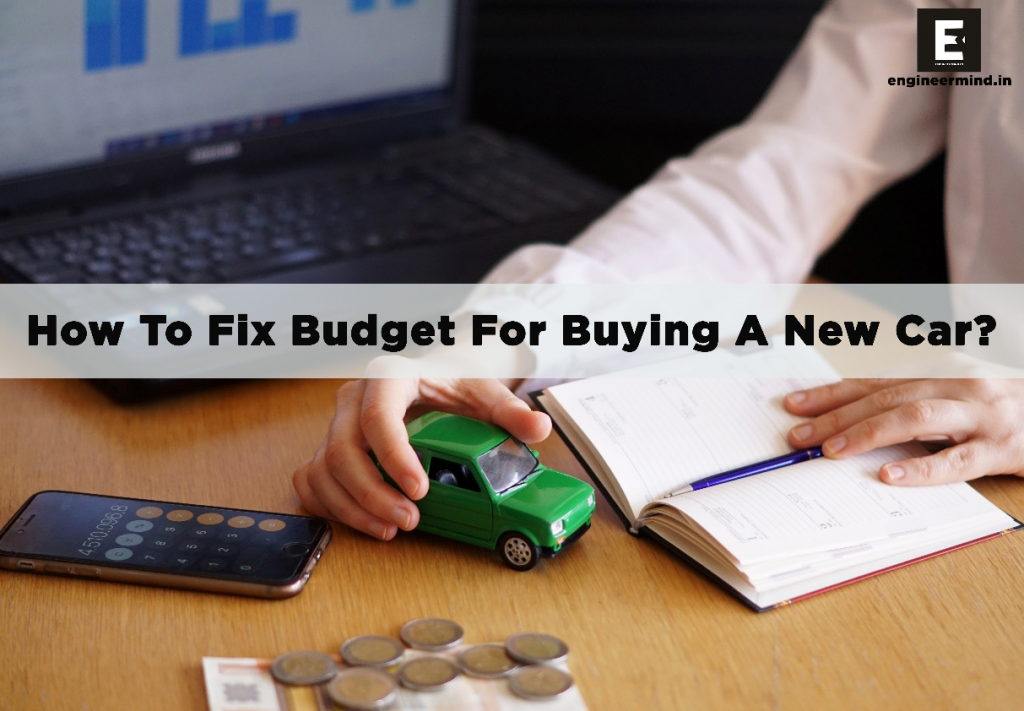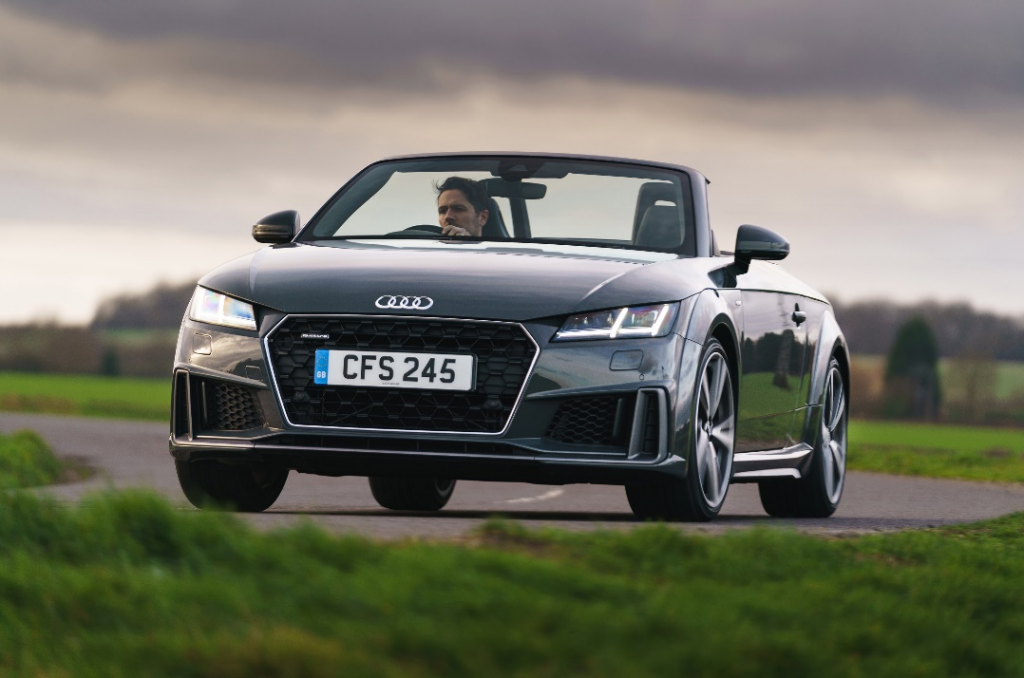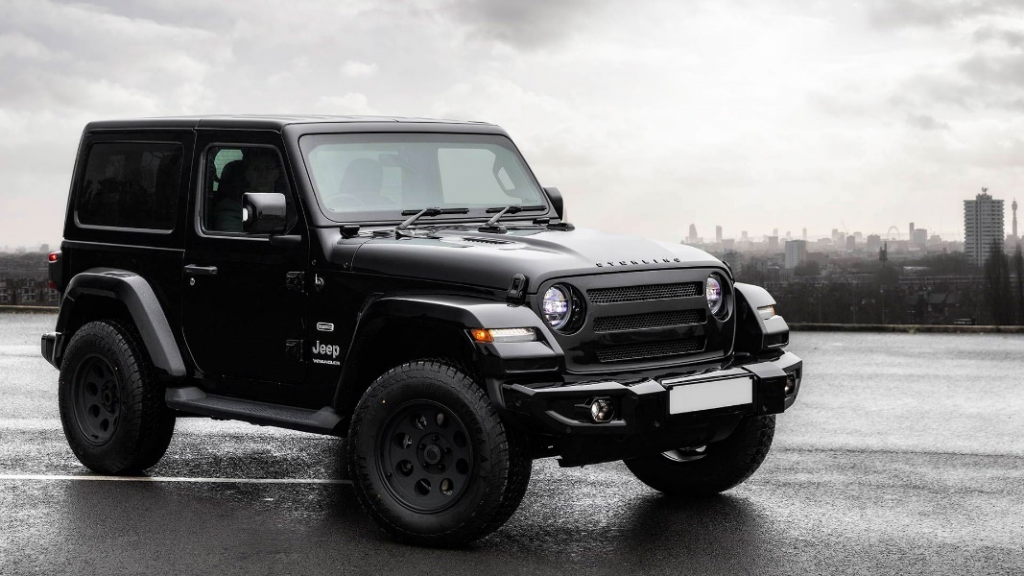What to know before buying a car? Buying a car is a significant investment and a decision that should not be taken lightly. Whether it’s your first car or an upgrade, there are several factors to consider before making a purchase. From setting a budget to researching different models, understanding your needs, and evaluating financing options, thorough preparation is key. In this article, we will explore what you need to know before buying a car to ensure a satisfying and informed purchase.

Table of Contents
What to know before buying a car?
1. Fix budget

There are two budgeting rules:
- Rule 1: Spend less than half your annual income on a car
Let’s say that your annual income is 10 lakh rupees. Your spending limit for automobiles ought to be close to 5 lakh rupees.
You shouldn’t worry about whether you should be looking at your gross income or your net income. It is totally up to you to decide. To determine how much money you can spend, you should look at the car’s “on-road” pricing rather than its “showroom” price.
- Rule 2: Take a loan to purchase the car
According to the 20/4/10 rule of thumb, you should be able to make a down payment of 20% of the vehicle’s MSRP. The maximum loan term should be four years, and the equated monthly instalment (EMI) should not exceed 10% of the borrower’s monthly income.
To better comprehend the rules, let’s examine some examples. If your annual income is Rs12 lakh, you should not spend more than Rs6 lakh on a vehicle.
Based on the second rule, you should give a down payment of Rs 1.2 lakh and an EMI of approximately Rs 10,000. A four-year loan of Rs. 4.8 lakhs will be required in this case. Currently, the majority of lenders offer auto loans beginning between 7.5% and 8%.
If you borrow 4.8 lakhs for four years at an interest rate of 8%, the monthly payment will be 11,718.
Is it smart to pay a greater EMI than suggested by the rule of thumb? Norms of thumb are merely guiding concepts and not set in stone. You must determine what works best for you.
Before buying a car on loan read this article:
Common car loan mistakes that cost you money
2. Purpose of purchasing a car
When buying a car for yourself or your family, choosing the right budget is one of the important factors in the decision. After choosing the right budget you must have to think about why you are buying a car.
A person can buy a car for a number of different reasons.
· Some people may need a car for commuting so they can drive to work every day.
· Some people might be looking for a family car that makes it easy for everyone to travel together.
When you know what features are most important to you in a car, it’s easier to choose one. For example, if storage is important, you should only look at cars with a lot of space and not at cars with small trunks.
3. Fuel type
Any person who wants to buy a new car needs to know a lot of things, but one of the most important is what kind of fuel the car should use.
There are five types of cars based on fuel:
- Petrol car
- Diesel car
- CNG car
- Electric car
- Hybrid car
In the past, most people choose between gasoline and diesel, but as technology changes, electric and hybrid cars are becoming more popular. When deciding which type of fuel or power is best for you, you should think about several things, such as:
- How much it will cost you in gas or electricity
- What kind of driving do you do?
- How much it will cost you in gas or electricity
- Other costs, like taxes and depreciation
- Concerns about the environment
- How easy it is to live with the car transmission
4. Body type
Some of the important car body styles are mentioned below.
Hatchback

Having parking problems? It’s possible that hatchbacks are the best option for you. These charming and nimble little cars are not only easier to maneuver, but they are also less taxing to drive in the stop-and-go traffic of the city. In addition to that, they provide certain deluxe amenities.
Sedan

This is the sector that proudly displays its sophistication and opulence. In addition to this, in comparison to hatchbacks, the sedans have a longer wheelbase, which results in additional interior space being made available. If you are willing to travel long distances with a reasonable amount of luggage and do not want to sacrifice luxury, the sedan is the vehicle for you.
MUV/SUV

Over the past decade, it is impossible to refute the reality that the majority of purchasers have been drawn to the large, high-riding SUVs. After all, they provide a feature that none of the other market segments do, and that feature is the ability to go anywhere. This is something that SUVs are capable of doing without making too many sacrifices in terms of ride comfort. The present generation of sport utility vehicles, on the other hand, is more of a soft-roader and is primarily intended for use in urban environments. In the past, SUVs were all about rugged appeal and off-roading.
Coupe
A car is referred to be a coupe if it only has two doors rather than four. The two doors are a little bit larger, and even while the back seat is included in some variants, it is still possible to access the inside by moving the front seats forward. In this respect, image, luxury, and stylish presentation are of the utmost significance. The coupe body style is most common in European countries; despite its availability in India, only a small percentage of drivers opt for this kind.
Below are some of the best coupes in India:
- Ford Mustang
- Audi R8
- Mercedes Benz GLE Coupe
Convertible

Convertible cars are automobiles that have a roof line that can be folded back or removed according to the driver’s preferences. In most cases, it is only accessible in more expensive luxury vehicles. Electromechanical devices are utilized in the process of folding the roof lines in a step-by-step manner. In previous cars, leather was employed as the material of choice. The roof lines of modern vehicles are made of metal, and they have a design that allows them to fold up piece by piece and eventually rest on or in the trunk area of the vehicle. Simply pressing a button is sufficient to either fold or unfold the roof linings, depending on your preference.
Wagon

A wagon is a style of vehicle that combines aspects of a hatchback and a sedan quite successfully. These versions have the benefit of having more space behind the second row than other variants. It is versatile enough to accommodate either bags or more passengers, depending on the need. In terms of width and height, the dimensions are more expansive than those of a hatchback.
The Maruti Suzuki Wagon R, the Mahindra Quanto, the Tata Indigo Marina, and even older types of cars like the Tata Estate are all instances of the Wagon type. Other examples include. Even cars like the Maruti Suzuki Ertiga and the Nissan Evalia might technically be considered wagons. The size can vary, but the category remains the same.
Van

The term “van” refers to automobiles whose primary focus is on providing a degree of adaptability in the way the inside space is utilized. It is possible to customize both the number of seats and the amount of space available for luggage. The best example is the Maruti Suzuki Omni, and Eeco.
There is a distinction to be made between the automobiles (and vans in particular) utilized solely for business purposes and those that are put to use transporting passengers.
Example of business purpose vehicle includes Tata Ace, Tata Venture, etc.
Jeep

Jeeps are a special kind of vehicle that can either have a hard top or a soft top, making them similar to MUVs but with more customization options. At now, the Mahindra Thar, Maruti Suzuki Gypsy, and Mahindra Jeep are the three most well-known Indian vehicles.
The vehicle’s price and utility fall in between those of a sports car and a multi-purpose utility vehicle, making it an ideal choice for long-distance travel and forest excursions.
Pick up vehicle

We call the compact multi-use vehicle (MUV) with a dedicated trunk “Pick up vehicle” (Pick up Van). One such model is the Tata Xenon XT. It combines elements of a multi-purpose utility vehicle (MUV) with a commercial pickup truck. Its roomy interior would comfortably seat five people and include a dedicated storage area for bags located in the back of the cabin. Because the body is constructed on a chassis frame and the vehicle’s overall dimensions are increased, the vehicle’s payload capacity can be increased significantly. An average estimate places it at roughly 800 kg.
5. Resale value
We call the compact multi-use vehicle (MUV) with a dedicated trunk a “Pick up vehicle” (Pick up Van). One such model is the Tata Xenon XT. It combines elements of a multi-purpose utility vehicle (MUV) with a commercial pickup truck. Its roomy interior would comfortably seat five people and include a dedicated storage area for bags located in the back of the cabin. Because the body is constructed on a chassis frame and the vehicle’s overall dimensions are increased, the vehicle’s payload capacity can be increased significantly. An average estimate places it at roughly 800 kg.
6. Safety rating
Consider the safety aspects of your new car to be a top priority. In terms of security, the following are examined:
- Solidity of Construction
The reliability of a vehicle’s construction and components is always a priority one when it comes to safety. This is used to soak up and disperse impact energy in the case of a collision. To be considered safe, a vehicle must be able to keep its form in the event of a collision. It’s important that the moving pieces of the car, both inside and out, stay put so that nobody gets hurt. In the event of a collision, it is equally expected that the doors will be closed during impact but will open normally thereafter.
- Active Stability Control
This is known by a variety of names, and the name used by a given manufacturer may change. The function is the same whether it is called active stability, electronic stability control, an electronic stability program, or just vehicle stability. Active stability controls enable drivers to control and maneuver the vehicle in the case of a sudden vehicular veering to avoid collisions.
- Anti-lock Braking Systems
These keep the wheels from locking up when the brakes are engaged. As a result, the driver has more control and traction over the car and is less likely to experience skidding or loss of grip in an emergency situation with a limited stopping distance.
- Airbags
Airbags are designed to protect passengers in the case of a collision and are therefore anticipated to deploy and inflate quickly upon impact. When deployed properly, airbags have been shown to drastically cut the number of major injuries and fatalities that occur in the case of an accident. Best-in-class automobiles will feature front, side, curtain, and knee airbags. Drivers should seek for them while making their decision.
- Seat belts
In the event of an accident, seat belts prevent passengers from being thrown around the car. Whenever riding in a car, bus, or truck, it is mandatory for all passengers to wear safety belts at all times. Vehicles with 3-point sash seat belts that retract and have pre-tensioners are highly regarded. This aids in keeping passengers safe and absorbing crash forces.
7. Comfort
Here we are at the end of the inquiry process, looking into the amenities and features. This varies by trim level, with the luxury version including every available convenience. The higher trim levels are more expensive, but they include convenient extras like rear defoggers and wash wipers. Some automakers omit these two must-haves from their base models.
Conclusion
Buying a car requires careful consideration and research to ensure you make the right choice for your needs and budget. By setting a budget, conducting thorough research, test driving and inspecting vehicles, evaluating ownership costs, and negotiating effectively, you can navigate the car-buying process with confidence. Take your time, weigh your options, and make an informed decision that aligns with your preferences and financial situation.








